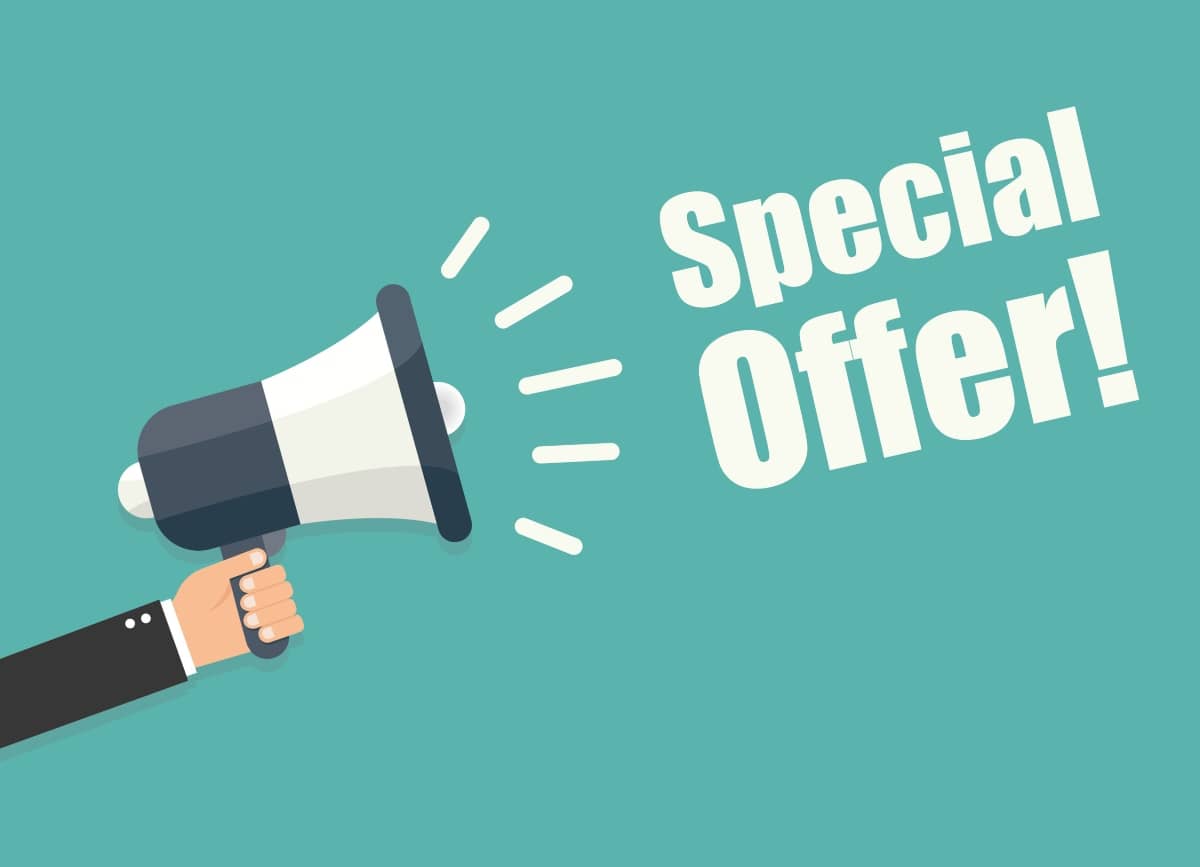Build a Social Media Marketing Funnel (& Convert Like Crazy!)
You’re all in on your social media marketing strategy, but have you considered a social media marketing funnel to get more conversions?
No?
The social media marketing funnel is the new gold standard of all the ways you could market your small business on social media.
It’s the most powerful content marketing strategy for marketers wishing to turn cold leads into passionate brand advocates.
If you’re ready to learn all about it, grab a snack and settle in.
What Is a Social Media Marketing Funnel?

Like a sales funnel, a social media marketing funnel breaks down a customer journey from point A to point B.
A digital marketing sales funnel begins with brand awareness and ends with a sale.
With social media marketing funnels, the beginning is the same, but the end is the bigger picture.
It goes beyond the first sale to cultivate customer loyalty and trust.
And it begins by identifying a problem shared by your target audience and providing a real solution.
If you know when and where to find them, you can become the go-to fixer of your target audience's biggest problems.
Knowing how to reach them is only the first stage of a customer’s relationship with your brand:
- Awareness — when your audience learns of your brand’s existence
- Consideration — when you stand out from the competition (in a good way)
- Action — when someone in your audience takes action and becomes a customer
- Engagement — to maintain a positive relationship with your customer
- Advocacy — when a satisfied customer becomes a brand ambassador
Unlike a sales funnel, the social media funnel isn’t all about getting you to click on the “Buy” button
Also, unlike a sales funnel, the social media funnel doesn’t end when you get through the checkout process.
Branding is about the bigger picture.
It relies on a long-term relationship between each customer and a particular brand and the business behind it.
Why You Should Build a Social Media Marketing Funnel
The number of social media users worldwide reached 3.78 billion and is expected to reach 4.41 billion by 2025.
And those users spend about two and a half hours on social media every day.
Aside from that, why should you spend time, energy, and digital marketing dollars on a social media sales funnel?
- Sharing content and interacting with leads on social media doesn’t cost anything
- Customers want to see brands making an effort to meet them where they are
- Shared goals and interests makes your brand more relatable and approachable
- Digital marketing automation tools make it easier to boost your brand’s visibility
- Social media analytics tools like Google Analytics takes the guesswork out of measuring your impact
- Social media automation tools automate repetitive tasks, saving you loads of time
Stages of the Social Media Marketing Funnel
Making the most of your social media presence means taking into account how your target audience uses each and every social media platform.
That knowledge plus an understanding of specific problems they have that you can fix without asking them for money gives you an exclusive backstage pass.
It sets you apart from the competition — especially those focused on turning every conversation into a sale.
An effective digital marketing sales funnel is about putting yourself in your customer’s shoes.
1. Awareness
The awareness stage is where people first learn of your brand’s existence and what it can do for them.

Say you’ve identified your target audience. And you’ve figured out which social media channels they use the most and when they’re most active on those channels.
The first thing you want to do is show them you exist and you can solve a problem of theirs without expecting anything in return.
The only thing you’re going for at this stage of the relationship is brand awareness; you want them to know you’re there.
Here’s how you do that:
- Create shareable content (blog post, tutorial video, infographic, etc.) that addresses specific personal or professional challenges your ideal customers face.
- Offer valuable information your potential leads can use to solve a problem or gain a pivotal advantage.
- Invite them to share feedback on the content you’ve provided, and use that to make any necessary or advantageous improvements.
At this stage, you won’t be pitching your digital product or service to anyone reading, listening to, or watching your free content.
The goal is to establish yourself as a solution provider.
You want them to see you and your brand as a trusted source of valuable information.
You want to take up residence in the back of their minds so they’ll think of you when they want to address a specific problem related to one you’ve already solved for them.
2. Consideration
The consideration stage is all about getting your brand to stand out from the competition.
You’ve got your potential buyer’s attention.
They know you exist and they’ve had a chance to see how your free content has solved a problem of theirs or made a particular challenge easier to face.
Now it’s time to show them how your brand is an ideal fit for them or for their business.
How are your products or services different from what your social media competitors are offering?
What is the USP (unique selling proposition) and how do you communicate that?
What do you have that the other guys don’t?
If your ideal customers can answer those questions, they’ll see your competitive advantage and remember you when it’s time to spend some money.
To help them answer those questions, you’ll want to provide more specific information about what you’re offering, using case studies, product reviews, customer testimonials, white papers, webinars, and other content types that showcase the best features of your brand’s offerings.
You want them to see customers like themselves excited about what your product or service has done for them.
To that end, you’ll also want to consider specific social media tools like the following:
- Facebook Group
- Instagram Story
- YouTube videos
- Google Ads
- Product demos
- Twitter Chats
- Forum posts and comments
- Social media advertising (Facebook, Pinterest, YouTube, etc.)
Once your audience knows you exist, make it easy for them to learn more details about your product or service, so they can see as clearly as possible how your brand stands out.
3. Action / Conversion
The action stage is where a potential customer takes action to become a customer.

Once they know you exist and can see how your product is the best of the best when it comes to their particular needs and preferences, this is where you give them the nudge they need to make a purchase or sign up for what you’re offering.
The content you used in the previous stage (consideration) can do just that by providing social proof that your product or service is the potential customer’s best option.
Offer the following to provide them as much social proof as you can:
- Customer reviews (text and video)
- Product demos
- Customer testimonials
- Case studies and white papers
- Webinars
Use tactics like the following to make it as easy as possible for your best leads to becoming customers:
- Social media contests (with purchase incentives: discounts, bonuses, etc.)
- Social media ads with time-limited special offers or coupons
- Special time-limited promotions for email subscribers
Try to get inside the head of your ideal customer to help them cross the line between promising lead and paying customer.
The next stages are every bit as critical to your brand.
4. Engagement
At the engagement stage, you’ll use social media to engage your existing customers and ensure each one is satisfied with their purchase and with their interactions with your brand.
This is not the time to push them into another sale.
You want to stay top of mind as a provider of solutions.
Whether they make another purchase will largely depend on how you treat them after the sale.
You want them to feel supported — to know you’ll still be there, ready to help.
Buyer’s remorse is one thing you want to strenuously avoid.
Your goal is to keep the conversation going, invite them to ask questions and leave an honest review.
Because if what they purchased falls short of their expectations, you want to know that as soon as possible, so you can do something about it.
Happy customers leave positive reviews. They also move on to the next stage, which is where they become the real beating heart of your brand’s entire digital marketing funnel.
The more they share their positive experiences on social media — using social media tools like Twitter chats and LinkedIn groups — the more they can funnel new prospects right to the first stage of your social media marketing funnel.
5. Advocacy
The advocacy stage is where satisfied customers become passionate brand ambassadors.
This is also where influencer marketing happens.

But while customers with thousands of loyal followers can definitely be an asset, every customer’s advocacy is worth cultivating.
A brand advocate shares their positive experience of your brand with others, especially those likely to be interested in the same product or service.
The more a customer trusts you to deliver on your promises and meet (or even exceed) their expectations, the more likely they are to recommend you to others.
This is where those customer testimonials and reviews come in.
A potential customer wants to know that an existing customer of your brand is so thrilled with their purchase they’re willing to stake their reputation on it.
So, how do you incentivize the kind of brand advocacy that will help you leapfrog the competition?
- Offer product review incentives like customer rewards (discounts, free shipping...)
- Create an affiliate program with rewards for those who use custom links to recommend you to others.
- Create a loyalty rewards program that offers something in exchange for a product review and makes it easy for customers to promote your brand on a social channel.
- Encourage satisfied customers to share their experiences on your website or your Facebook (Meta) business page.
- Offer giveaways exclusive to customers who leave reviews or post testimonials.
Once you collect a few customer testimonials and reviews,
- Use them in your social platform ad campaigns
- Use them in promotional email marketing campaigns
- Add them to online informational content for specific products or services
- Share them toward the ends of webinars to convert attendees into customers
- Use an experience involving a loyal and influential customer for a case study
How to Build a Social Media Marketing Funnel
The backbone of a powerful social media strategy is the relationship you build with each customer, from the moment they learn of your existence to the point where they become an outspoken advocate for your brand.
Loyal customers are the most powerful element of any social media funnel. And that kind of loyalty requires a big picture approach to marketing your brand.
The following steps will break it down.
1. Determine your marketing goals
Before you even start on your social media marketing funnel, make it a priority to spell out specific, measurable goals.
It’s not enough to say, “I want to reach and convert more of my target audience.”
Think in terms of numbers or percentages.
You won’t know how successful your efforts have been until you can measure your results and see how they compare to your original targets.
2. Design your lead magnet
Your lead magnet is something your ideal customer would value — something that identifies and solves a problem of theirs — to draw them in and get them acquainted with your brand and what it offers.
It should be something your ideal customer finds easy to consume: articles, infographics, newsletters, videos, animations, etc.
And it should include a call to action.
3. Entice prospects with offers

Once you’ve drawn in a potential prospect with your lead magnet, build on that connection with a special offer that persuades them to take some small action that gets them closer to making a purchase.
Offer a sign-up bonus or reward, free for them to download — like an eBook, a free consultation, a product demo, or something that shows your product’s USP.
4. Create specialized landing pages
Design and deploy specialized landing pages for each lead magnet. Your customer shouldn’t have to look for it.
Link directly to your landing page from the social network promoting your offer.
A specially designed landing page for your lead magnet or bonus content makes it stand out as something worthy of that extra attention (and effort).
5. Track your metrics
Tracking your brand awareness and engagement metrics (likes, comments, shares, etc.) is essential to measuring the success of your efforts along the way.
Use A/B testing and different landing pages to see which approaches are most effective.
And use social media analytics tools to measure your impact on your social media platforms.
How Will You Fill the Gaps in Your Social Media Marketing Funnel?

Social media is crucial to your brand’s digital marketing strategy.
Now you know how a social media marketing funnel elevates your conversion goals.
You can clearly identify what you’re doing and not doing to reach your target audience through a social funnel and build a loyal customer base.
Why are you still here?